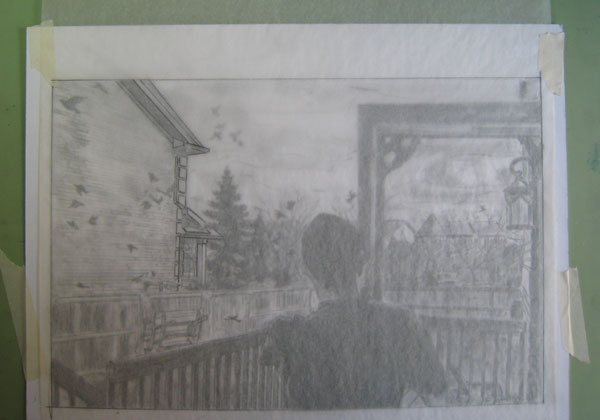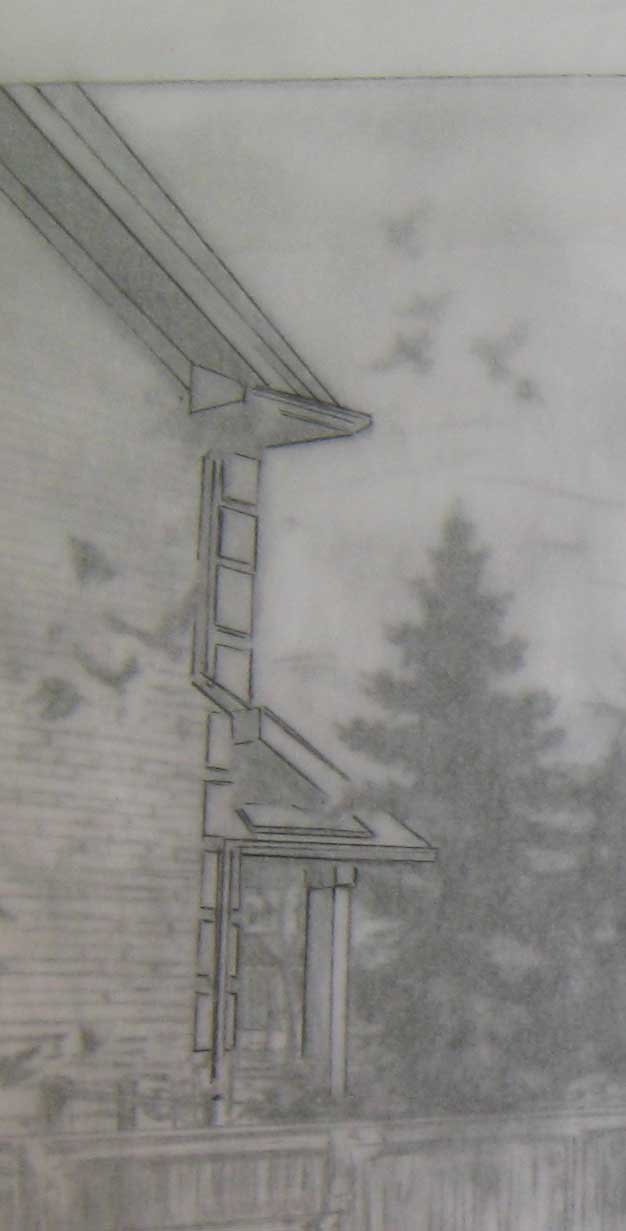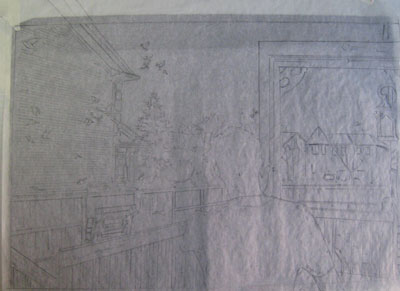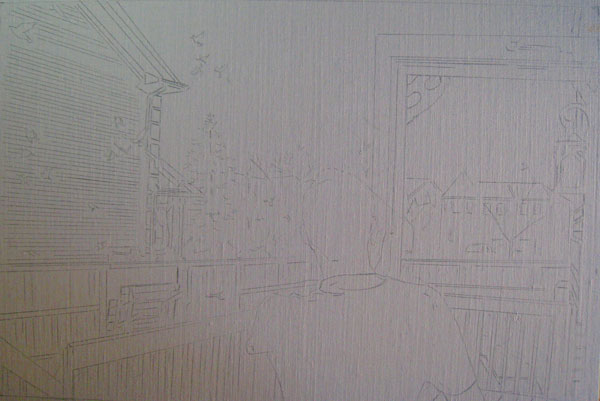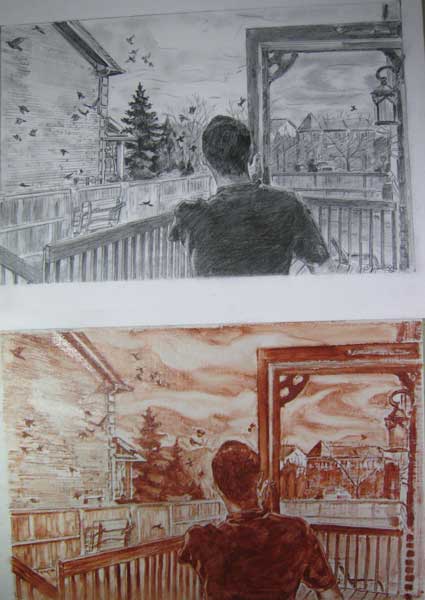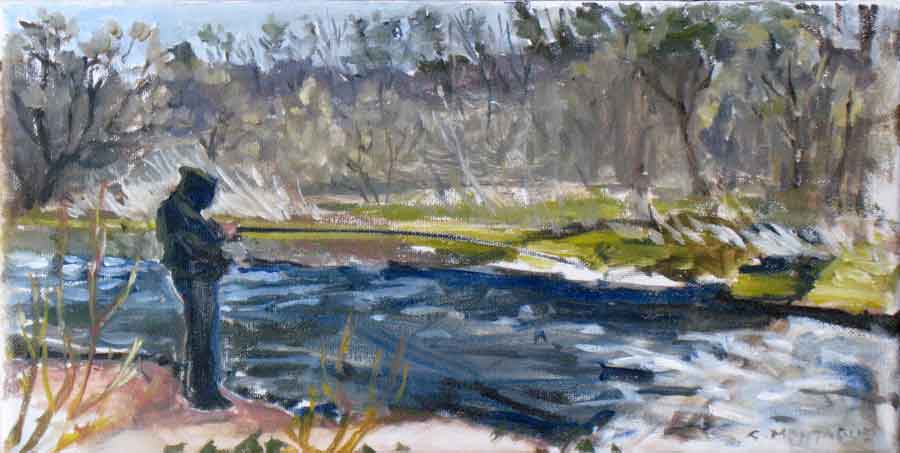 2010 Update: This original plein air oil painting, painted on location by the Credit River, -under the bridge at Burnamthorpe Bridge between Riverwood Park and Erindale park - has been given as a charitable donation to the Art Gallery of Mississauga (AGM) for its 2010 7th Annual Art Auction Fundraiser, April 29th, 2010.
2010 Update: This original plein air oil painting, painted on location by the Credit River, -under the bridge at Burnamthorpe Bridge between Riverwood Park and Erindale park - has been given as a charitable donation to the Art Gallery of Mississauga (AGM) for its 2010 7th Annual Art Auction Fundraiser, April 29th, 2010.
Above is a 6" x 12" oil painting of a man fishing by the Credit River. We are both under the enormous Burnamthorpe Road bridge - between Erindale Park and Riverwood Park. The day was sunny but the shadow and the wind was cold! After 3 hours my convulsive shaking told me the painting was now finished.
Today I had the fun of plein air painting with the newly formed group, Ontario Plein Air Society (OPAS). I had not painted on location in years and never before with oils ( the exception Tapatoo Tree (sold) in water soluble oils ) . Painting on location is quite exilarating - at least that is what I felt after I was done, and could seek relief from the cold and wind in a more sunny spot.
Just before I headed out to meet up with OPAS at Riverwood Park, I quickly thumbed through some International Artist & other art magazines for some helpful hints. Painting on location requires effort put into the logistics.
Following the example of British artist James Hart Dyke (American Artist magazine November 2003) I used the limited palette French Ultramarine, cadmium yellow, cadmium red light, raw umber and titanium white. What freedom!
Once on location, I struggled a bit with what to paint. I sat across from an enormous old tree, partiatially in decay - but what I wanted to say about this tree could not be said on my 6" x 12" canvas. Suddenly I found my self doing a quick - almost Japanese brush like gesture of the fisherman before me ( I could have drawn him all afternoon) and that was that - I had my subject. I guess I just cannot escape the call to put a figure in my landscapes.






